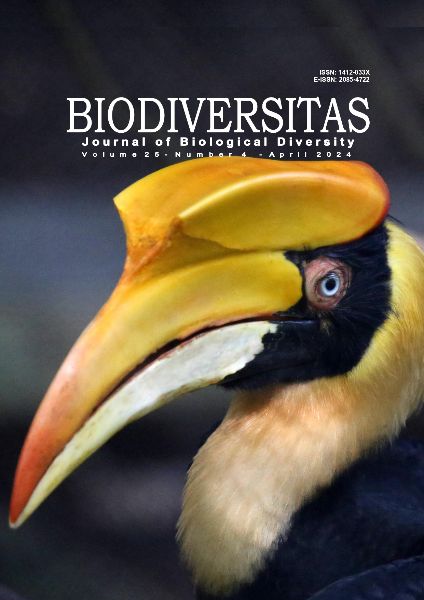Characterization of melon (var Sky Rocket) peel pectin using microwave-assisted extraction at different powers and extraction times
##plugins.themes.bootstrap3.article.main##
Abstract
Abstract. Aini N, Herdawan IS, Sustriawan B, Setyawati R, Kurniawan REK, Suliman NM, Arsyistawa HS, Indarto. 2024. Characterization of melon (var Sky Rocket) peel pectin using microwave-assisted extraction at different powers and extraction times. Biodiversitas 25: 1528-1535. Pectin is a heteropolysaccharide molecule that can be used as a thickening agent due to its ability to bind large amounts of water. Pectin can be obtained from fruit peels containing pectic compounds, one of which is melon. A modern extraction technique such as Microwave-Assisted Extraction (MAE) is appropriate because it requires a relatively short time and lower costs. The objective of the research was to determine the effect of power and time on the pectin extraction from melon peel using microwave-assisted extraction. Sample preparation was done by drying the melon peel and then crushing and sieving it to produce melon peel powder. The powder was extracted using combinations of various microwave power of 180 (D1), 270 (D2), and 360 (D3) watts and extraction time variations of 3 (W1), 5 (W2), and 7 (W3) minutes. The results showed that the best treatment combination was extraction using microwave power of 270 watts for 3 minutes, which produced melon peel pectin with a yield of 6.4%, moisture content of 8.85%, ash content of 7.73%, equivalent weight of 1,810.07 mg, methoxyl content of 2.46%, galacturonic acid content of 95.74%, and degree of esterification of 22.02%. Melon peel, usually considered waste, can be used more optimally as a source of pectin.

